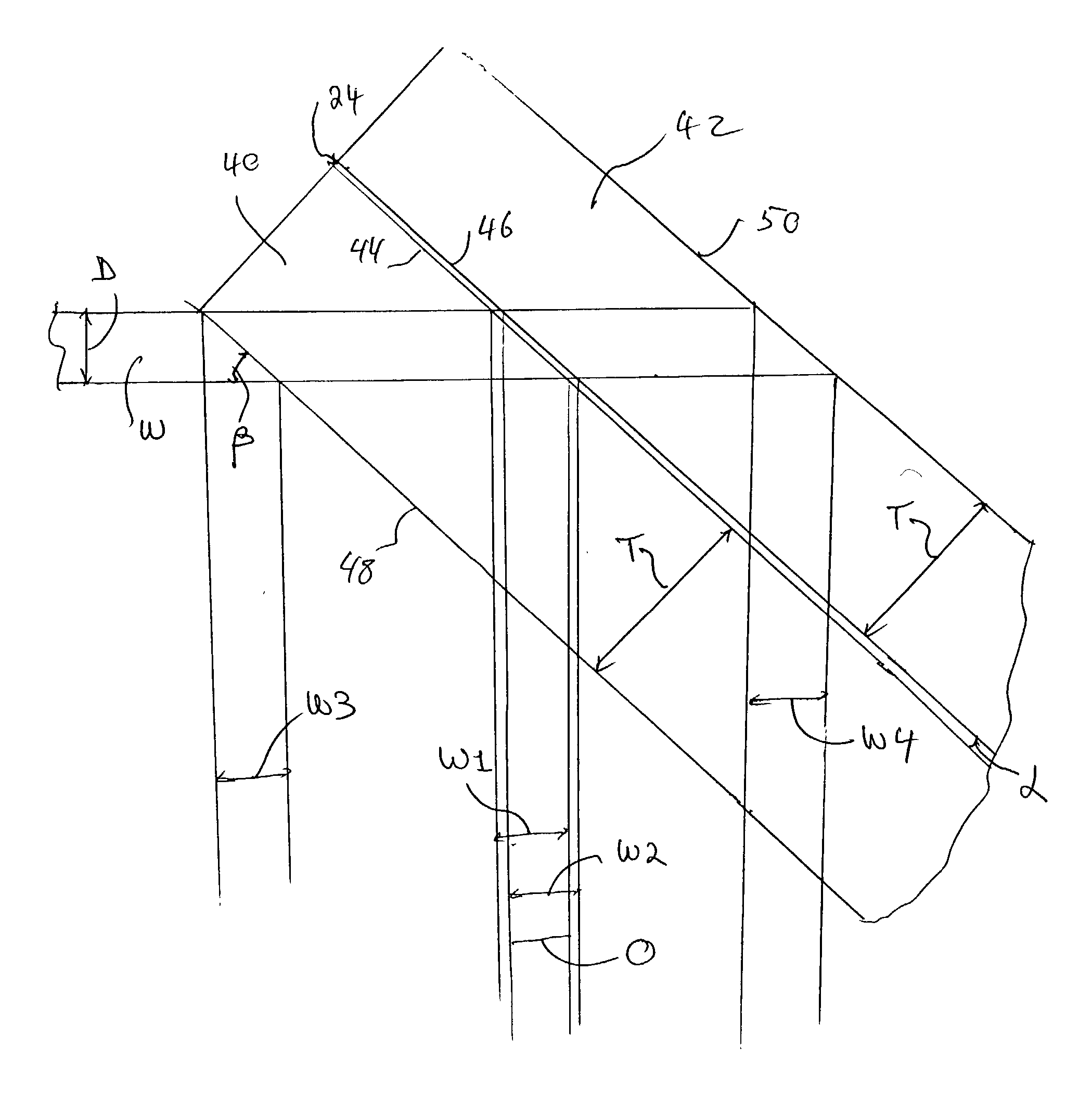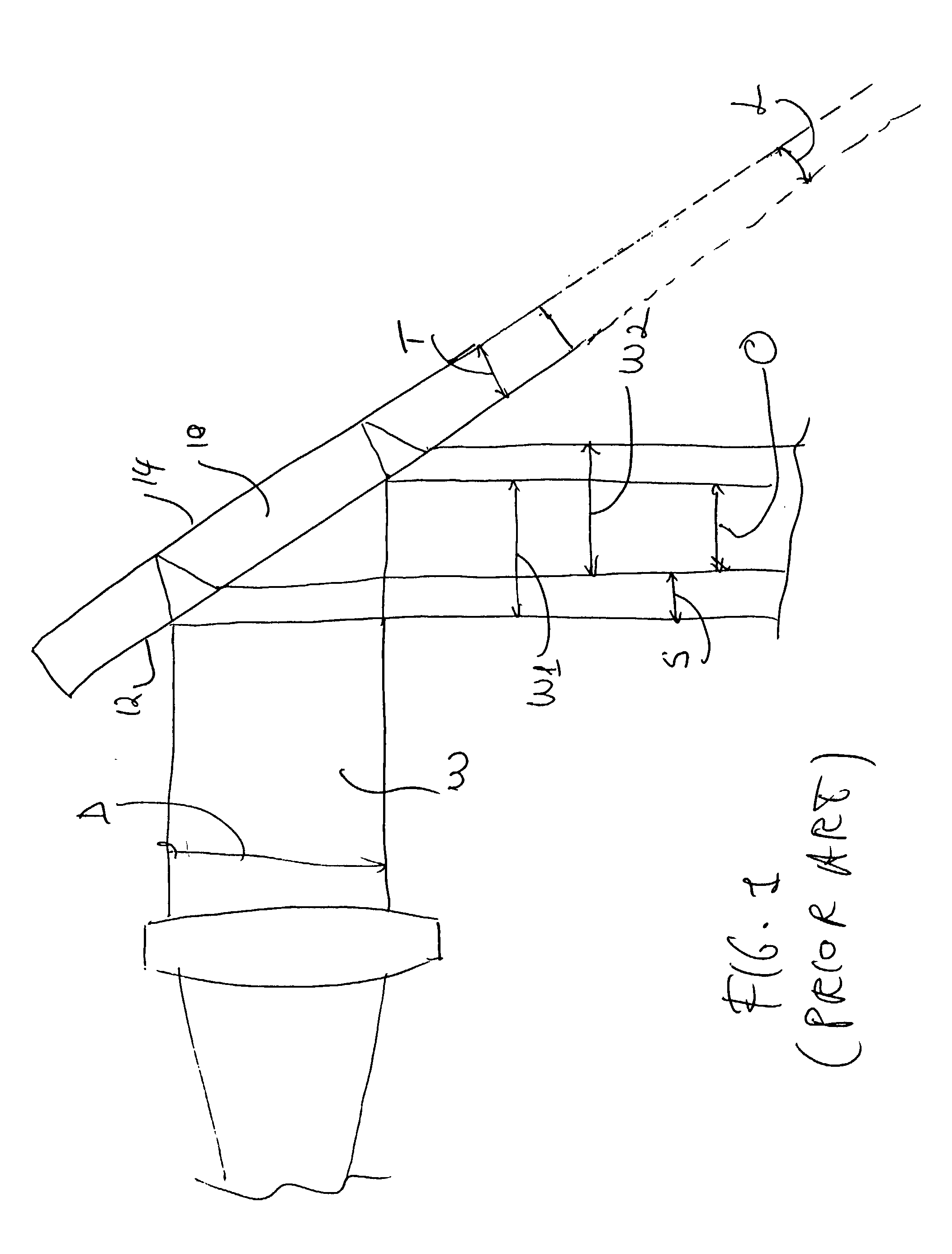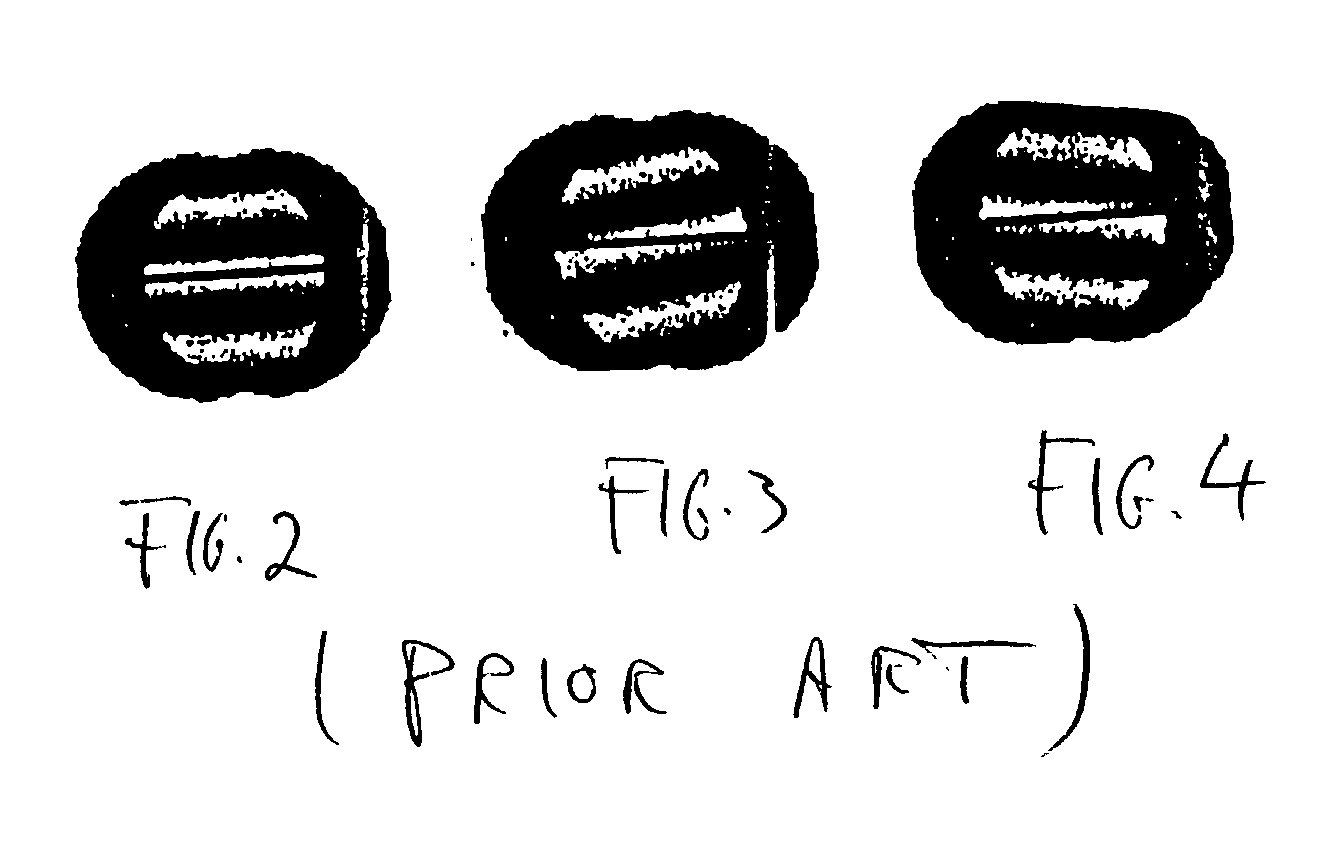Small-beam lateral-shear interferometer
a lateral-shear interferometer and small beam technology, applied in the field of interferometry, can solve the problems of difficult to manufacture glass plates less than a few millimeters thick, limited beam w, and inconvenient lateral-shear interferometers
- Summary
- Abstract
- Description
- Claims
- Application Information
AI Technical Summary
Benefits of technology
Problems solved by technology
Method used
Image
Examples
Embodiment Construction
[0030] One aspect of the present invention lies in the recognition that the interference problems arising from the reflection produced by the outer surfaces of conventional dual-plate lateral-shear interferometers can be essentially eliminated simply by increasing the thickness of each plate. The invention further lies in the discovery that the combination of a lateral-shear interferometer with a tilting reflective surface in the optical path of the incoming beam can be used advantageously to produce phase shifts in the pattern of interferometric fringes observed at the output of the device. Thus, the lateral-shear interferometer of the invention, in addition to its simpler process of manufacture, can also be used as an alternative to much more complicated and expensive prior-art devices to carry out phase-shifting interferometry.
[0031] As used herein, the terms "two-plate" and "dual-plate" are used interchangeably to refer to lateral-shear interferometers wherein the beam displacem...
PUM
 Login to View More
Login to View More Abstract
Description
Claims
Application Information
 Login to View More
Login to View More - R&D
- Intellectual Property
- Life Sciences
- Materials
- Tech Scout
- Unparalleled Data Quality
- Higher Quality Content
- 60% Fewer Hallucinations
Browse by: Latest US Patents, China's latest patents, Technical Efficacy Thesaurus, Application Domain, Technology Topic, Popular Technical Reports.
© 2025 PatSnap. All rights reserved.Legal|Privacy policy|Modern Slavery Act Transparency Statement|Sitemap|About US| Contact US: help@patsnap.com



